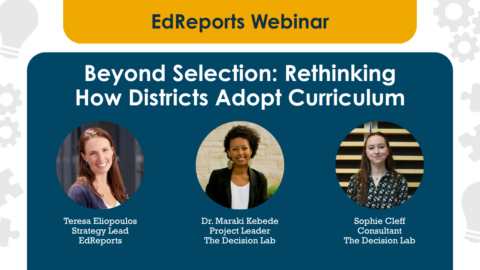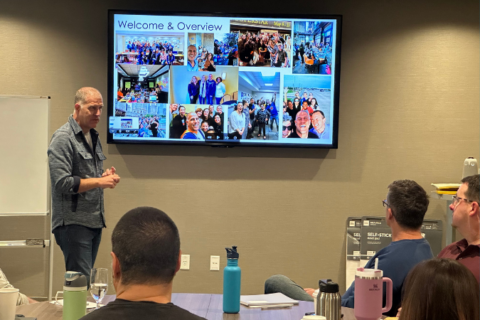Providing Teachers with Quality Materials that They’re Trained to Use as Schools Prepare for the Fall
Veteran teacher Amy Cox shares four actions school districts can take to ensure students and teachers have high-quality instructional materials to support them through the COVID-19 pandemic.
Related Resources
article
State Curriculum Lists Explained: 6 Things to Know
Learn how state curriculum lists shape curriculum adoption, HQIM selection, and classroom use—plus key policy choices and incentives that affect districts.
video
Webinar—Beyond Selection: Improving Curriculum Adoption
Discover insights from EdReports and The Decision Lab on evolving curriculum adoption to better support teachers and boost student outcomes.
news
EdReports CEO Eric Hirsch to Step Down in 2026
After a decade of transformative leadership, Hirsch will remain through June 2026 to support a seamless transition as EdReports begins its next chapter of impact and innovation.


